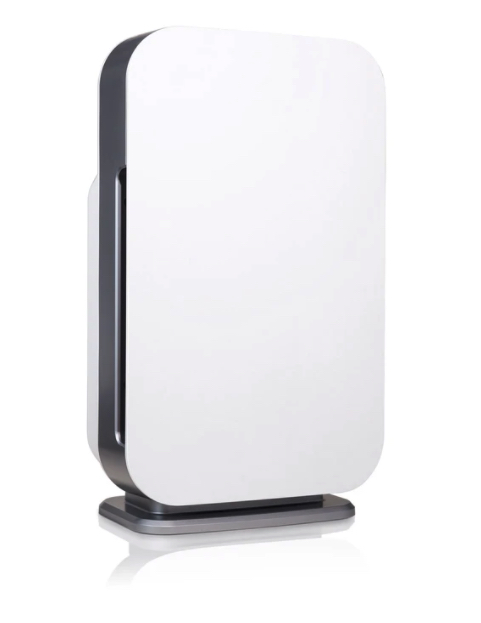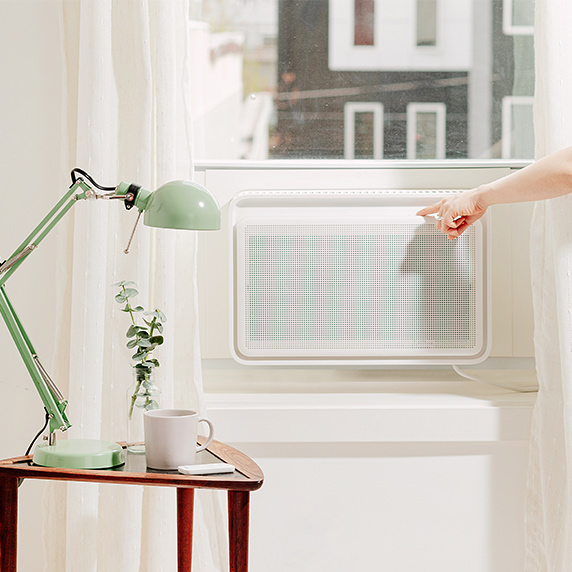4 Summer Indoor Air Quality Tips for Your Healthy Home
“You have to be a bit of a detective and look at all the parameters because there are lots of things that contribute to healthy indoor air,” says Dr. McKeon. While winter brings its own host of indoor air quality issues, summer indoor air quality issues may be impacting your well-being. “Anything from the environment you live in, to your air conditioner could be making your air dry.”
Tips for good indoor air quality throughout the summer
1. Make sure you have good air circulation
When you’re running your air conditioner, it’s most efficient to close all your windows. But that can limit cross ventilation and air circulation. Dr. McKeon lives in a drafty 100-year-old Victorian house, so he’s getting fresh air even when the windows are closed. Not great for energy efficiency, but pretty good for circulation. “Now, we’ve tightened buildings for sustainability and et cetera, but sometimes, that can actually sacrifice the quality of the air,” he says.
If you live in a newer, well-sealed home, that means that when your windows are closed, dust, pet dander, and cooking fumes aren’t escaping into the world. In that case, Dr. McKeon says you should invest in a good air purifier.

Alen BreatheSmart 45i True HEPA Air Purifier — $429.00
The Alen BreatheSmart 45i True HEPA Air Purifier is sleek, quiet, and perfect for purifier medium-sized rooms. It features a True HEPA filter that captures 99.99 percent of airborne contaminants down to 0.1 microns, including allergens and aerosolized viruses.

Windmill — $395.00
If you’re in the market for a new window air conditioner, consider the Windmill, which combines an air purifier with an air conditioner. All air conditioners have filters, but those are to protect the air conditioner, not clean your air. Windmill is complete with a reusable antimicrobial-protected mesh filter and a replaceable activated carbon filter.
2. Don’t let your air get too dry
Whether you’re using a window unit or have whole-house air conditioning, running the AC can dry out your air. “Some people just don’t do well with the forced cold air—it’s almost like an irritant to their airway, similar to cold, brisk air outside,” says Neeta Ogden, MD, an allergist in Edison, New Jersey. A humidifier solves the problem in most homes.

Canopy — $150.00
The Canopy Humidifier is great for smaller rooms like bedrooms. It humidified your space without any visible mist or steam, meaning it doesn’t leave your stuff all wet. The non-electric portions of the humidifier are dishwasher-safe. It has 36 hours of running time and uses smart sensors to maintain optimal moisture day and night.
3. Make sure your ceiling fan is blowing in the right direction
Paying attention to that little switch on your ceiling fan can make a big difference. According to fan brand Hunter, changing the direction your ceiling fan blows seasonally is a simple way to get the most out of your fan. “The ceiling fan direction in summer should be counterclockwise to help create a downdraft, which creates that direct, cooling breeze,” says Hunter. “Your fan direction in winter needs to be clockwise to create an updraft and circulate warm air around the room.” With your fan working in a way that’s actually cooling your air, you might not need to crank the AC as high.
4. Keep air quality machines clean and dust-free
When is the last time you cleaned your ceiling fan blades? If they’re covered in dust, you’re just blowing dust around your home every time you turn it on.
“Because [ceiling fans] are, well, on the ceiling, they’re quite inaccessible. It’s out of sight, out of mind—people often forget to clean the top of them,” says Dr. McKeon. “So over time, dust mite allergens and other household allergens can build up on top of the ceiling fan blades. And then when you turn it on, that dust then get distributed.”
The same thing goes for air conditioners, air purifiers, and humidifiers, all of which breed mold and other allergens if not properly cleaned, “leading to allergy symptoms like a sore throat,” says Dr. Ogden. So be sure to look at the instructions for your gadgets and clean them correctly and thoroughly.
Oh hi! You look like someone who loves free workouts, discounts for cult-fave wellness brands, and exclusive Well+Good content. Sign up for Well+, our online community of wellness insiders, and unlock your rewards instantly.
Our editors independently select these products. Making a purchase through our links may earn Well+Good a commission.
